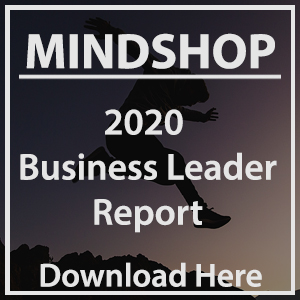This morning I added a voice over to a simple 8 slide Powerpoint deck about scenario planning during the Covid 19 crisis. As I uploaded this to Slideshare and my LinkedIn accounts I started to reflect on what business leaders may do with it.
Perhaps fortunately now, I have managed businesses or business units through 3 recessions before this current crisis. While this one is unique, that is exactly what it has in common with all of the others, they were unique. This is different though, as large sections of every developed, developing and Third World economy have slowed to a crawl in an effort to survive.
As a business advisor and leadership development coach I would not suggest for a moment that I have all the answers. However, what I do know is that no plan probably means no survival.
This particular presentation was my small effort, supported by Mindshop International, at supporting people during this period of intense “leadership development” that is being imposed upon business leaders by a tiny little virus. My focus in the near future is to unearth a host of initiatives that can be delivered at no cost to as many people as possible. I hope, to help just a little as they manage their own crisis.
Overall, we believe that there are a series of simple steps to follow for leaders to be effective:
- Manage your own stress and anxiety. As a leader, there will be lots of anxious moments, but the people that depend on you won’t follow you if you curl up in a ball and put your head in the sand.
- Keep things in perspective - it’s highly unlikely that you will become ill, though not impossible
- Make sure you get the facts, rely on proven data to base your decisions upon.
- Communicate more, not just about what is going on, but be honest with those around you about how you are feeling. Authenticity goes a long way.
- Stay connected. Your trusted communities will still be talking to you, they will just be online. You may rely on your family more and there may be 1 or 2 people with whom your contact may be more intense than it is with others.
- Don’t forget to seek help if the stress or anxiety becomes too much. Obviously, I am concerned about what my business will look like after this but my greatest sadness has been for the people who have really suffered and maybe lost their lives, for the disconnectedness, and also for my questions about whether our world and our lives will ever be quite the same again.
The key thing about all of these thoughts is that I can manage and control them. That is the lesson that I’m seeking to take into my own business and into my business messaging.
With support from our advisory network Mindshop International, we believe that this particular leg of our long journey can be navigated through 3 Phases and an understanding of 3 levels of severity.
The 3 Phases
· Phase 1 “Survive” - Many business leaders may have already addressed this although some of the remedies may take a little longer than we hope to arrive. Apart from managing our own anxieties, business leaders ought to have engaged in some level of disaster scenario planning, addressing short-term things that can be done to maintain a level of business health. In times like this, cash is king, and there is no doubt the cost-cutting may well be necessary. As with any other downturn, cutting the wrong costs can make the recovery much more difficult. Focusing on waste, and real tangible risk are important themes.
· Phase 2 “Pivot/Adapt” - The word ”pivot” has entered the business lexicon over the last couple of years. To learn more about it, see a book called The Lean Startup by Eric Ries. As business leaders begin to understand more about the impact of this crisis on their business, their people and their markets, the agile and innovative leader will find ways to adapt their business model, modify the range of technologies that they use, seek other innovations to create a new sense of purpose. They will understand that they also need to develop new capabilities as they work through this and they will need to develop these quickly. This phase is also where strategic planning for recovery begins.
· Phase 3 “Thrive” - Almost every recession is followed by a period of growth. These tend to have 2 distinct characteristics. The 1st is that growth comes over a period of a year or two as businesses feel that they can just get back to work. However, sometimes these periods are then followed by longer, slower recoveries. The other scenario is that organisations that have planned, evolved their growth strategies, evolved their people strategies and engaged in high levels of leadership support have seen long periods of steady extended growth. The difference between the two is almost exclusively down to planning.
The 3 Scenarios
These don’t require as much narrative. They are:
· Low Impact
· Medium Impact
· High Impact
What is important to consider is that the business and its leaders can move backwards and forwards between any of these scenarios during all 3 of the phases above as the consequences of external conditions and the decisions and choices that business leaders make impact upon their organisation. This is to be expected, but it is important to be ready, which takes us back to scenario planning.
I have included the downloadable PowerPoint with audio above, I will be sharing additional free resources in the coming days. We hope you find this helpful, if not you, share it with someone who might, and we are more than happy to engage with your questions as you navigate through next few months. Best of luck, and stay safe.





.png?width=208&height=97&name=SpFx_Affiliate_logo_large-1%20(2).png)